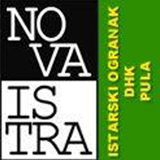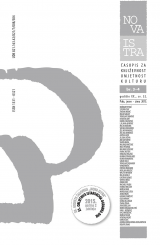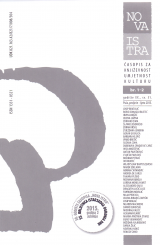
Mocenni Simone
SIMONE MOCENNI (b. Milan, 1970). Not only actively engaged in painting and sculpure but also in literature, i.e. poetry and prose writing. Started education at the Alessandro Manzoni Classical High School in his native town but soon discovered his passion for music (used to be even a young singer at the Milan Cathedral). Therefore, studied the contrabass at the Giuseppe Verdi Conservatoire.
Together with the Conservatoire choir and orchestra toured many Italian towns, and in Grožnjan, where the European Music Youth is based, got a diploma in composing experimental music after attending the seminar 'A time in music'. 1990 to 1992 worked in a factory producing plastic materials, and 1992-1996 was a printer in photo laboratories.
Published his first poems in 1995 in the Pulcinoelefante edition, Osnag (Lecco). One year later published his epic poem Epulo, Re degli Istri (his own edition, only 60 copies). In 1997, at the Povoletto Arteteatro (Udine), presented his book of stories Le due ancore. In 1998, La Battana literary journal (Rijeka) presented his short novel L'ombra del vagabondo. The same year, headed for Florida where lived for some time. After his American experience, worked as a photographer on the Costa Crociere cruisers.
Getting back to the native town, Milan, in 2000 opened a new phase in his life - now almost completely devoted to writing novels. His book Le parole del mare published in 2001 by the Mara publisher from Pula and presented in the part of the town known as Stoja where it is situated, at the Centro culturale Satura (Genoa), the Circolo alla Stampa (Milan) and the Italian Community of Poreč. His novels Le parole del mare, Ginestre sulla costa and L'orchestra dispersa are a trilogy about Pula (Trilogia di Pola), published by EDIT (Rijeka, 2006).
Had three one-man exhibitions in 2004 - at the Santabarbara arte contemporanea Gallery in Milan, the Nemeš Gallery in Pula and the Nove Colonne – Il Resto del Carlino Gallery in Bologna. The same year took part at the group exhibitions Omaggio a James Joyce at the cultish café San Marco in Trieste, in the Shakespeare Library in Paris and at Bocca in Milan. The same year also participated in 3rd international sculpture symposium held in the Italian little town of Castelraimondo (Marche region), where made the two-meter high scultpure - La rivolta dei cluster. In addition, in Pula made two sculptures from the Istrian white stone.
In March 2005 prepared a one-man exhibition, with his father, at the La Marchesa Gallery (Mirandola, near Modena). In June last year reached the finals for the Bice Bugatti Award (Nova Milanese). Also, last year but in October took active part in the painting bienalle in Ancara, Turkey.
Summary
Reading the definitions of love and hate in one old and one recent dictionary, you can immediately notice the difference between the way in which these feelings were viewed some fifty years ago and the way in which these are seen today. Starting from the definitions of these terms, you can realise what are the values on which a society is based, what remains unchanged and what has changed considering societies in which previous generations lived. Love, just as hate, surely remains unchanged despite different modalities according to which they are manifested. However, for the last decades, love has been increasingly seen in an apathetic manner, more and more related to the moments of passion than to those of love, while hate has become increasingly destructive like a volcano that will erupt on the day when no one will expect it, destroying in a second what was laboriously being built for a long time. Perhaps, our inability to identify ourselves with someone else, our desire not to think of someone else like a friend but more like a rival or even an enemy, or our insufficient knowledge about the behaviour of the ones who are similar to us always direct the present society to involution, to the new Middle Ages. That’s how I see it.
Translated by: Renata Šamo





Nova Istra broj 3-4/2015.
- U sjećanje
- Suvremena književnost
- Tema: HRVATSKA KNJIŽEVNOST U SUSJEDSTVU
- Nagrada „Zvane Črnja“ za 2014.
- Novi prijevodi
- Studije, ogledi, zapisci
- U spomen: GORAN STARČEVIĆ
- Hrvati i Ukrajinci
- Prilozi o zavičaju
- Kritički pristupi i osvrti

Nova Istra broj 1-2/2015.
- U sjećanje
- Suvremena književnost
- Tema: ANTUN GUSTAV MATOŠ (1873.-1914.)
- Novi prijevodi
- Studije, ogledi, zapisci
- Prilozi o zavičaju
- Kritički pristupi i osvrti

Nova Istra broj 3-4/2014.
- Suvremena književnost
- Novi prijevodi
- Tema: Optimizam
- Nagrada "Zvane Črnja" za 2013.
- Ogledi i zapisci
- Tema: Politika i političari
- Prilozi o zavičaju
- Kritički pristupi i osvrti

